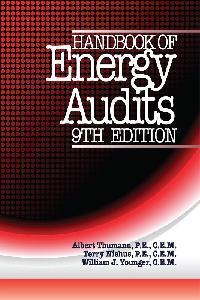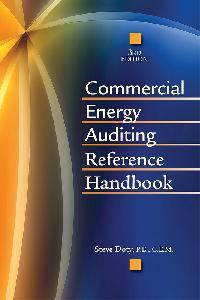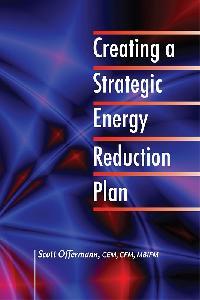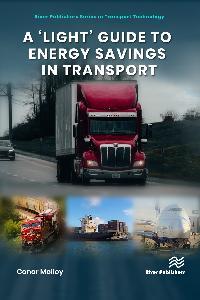
Puerto Rico Department of Economic Development and Commerce Certified Energy Auditor (CEA™) Training Program | October 27-30, 2025
Includes Multiple Live Events. The next is on 10/27/2025 at 8:30 AM (-03)
-
Register
- Non-member - Free!
- Member - Free!
Course Information
| October 27-30, 2025 |
| 3.2 CEU |
*Disclaimer* This course is for Puerto Rico Department of Economic Development and Commerce personnel only.
Registration closes 2 business days prior to training start or if course reaches capacity.
Course Description
This training program is designed to provide attendees an in-depth and technical review of energy auditing, including water usage in a facility. Over four days, our professional instructors will guide you through the principles and practices of greatest relevance and practical value.
Who Should Attend
The program is of greatest value to those undertaking or assessing energy auditing projects. Obtaining AEE’s CEA certification provides international credibility among energy management, sustainable and clean energy communities. Attendees of this program have included existing energy professionals, energy engineers, energy managers, facilities managers, and energy consultants.
Schedule
Daily Breaks: Lunch Break (60 min)
Please see the "My Learning Schedule" tab for schedule information.
In-Person Course Location:
Meeting Room: Annex C
Puerto Rico Department of Economic Development and Commerce
335 F.D. Roosevelt Ave
San Juan, PR 00918
Training Materials:
Printed training materials will be provided on the first day of the course.
They can also be found on the "Training Materials" tab for personal reference and/or printing.
Exam Information:
- Date: November 3, 2025
- Time: 4 hours
- Exam registrants are required to bring the following items: an HB #2 pencil, an eraser, a ruler, a sharpener, and a calculator.
- Allowed Calculators: Any calculator is allowed as long as there is no internet or Bluetooth capabilities.
- Prohibited Calculators: Smartphones, smartwatches, tablets, or laptop computers, including PDAs, electronic writing pads or pen-input devices, calculators built into cell phones or any other electronic communication devices.
For more information about this course reach out to Annie Sandlin, 770-447-5083 ext. 240, Annie@aeecenter.org
Section 1: Developing an Energy Audit Strategy and Plan
- Awareness of:
- Understand the goal of Energy Audits
- The major steps in the Energy Audit process
- The different audit levels
- Ability to:
- Plan for a successful audit
- Communicate the results of the Energy Audit effectively to the client
Section 2: Energy Use Analysis
- Awareness of:
- Energy forms and energy unit's conversion
- Energy rate structure and benchmarking
- Ability to:
- Analyze energy consumption for a facility
- Establish an energy balance for a facility
- Establish a consumption baseline and adjusting the baseline
Section 3: Data Collection and Analysis
- Awareness of:
- The importance of data in energy auditing process
- The different techniques to measure and analyze data
- Ability to:
- Define the necessary information to collect before and during the field visit
- Analyze the collected data to turn data into information
- Obtain an understanding of what is really driving energy consumption
Section 4: Economic Analysis
- Awareness of:
- Methodologies and tools to analyze and decide on investment projects regardless of their nature; notwithstanding, the main focus will be on energy efficiency projects
- Ability to:
- Understand the need for economic analysis and the importance of life cycle costing to assess an energy efficiency project
- Identify which cash flows (revenue and costs) should be included in the analysis
- Apply investment decision rules such as: Simple Payback Period (SPP), Simple Return on Investment (SRI), Net Present Value (NPV), Internal Rate of Return (IRR), and Saving to Investment Ration (SIR)
- Use Interest Tables and construct formulas in Excel for various financial calculations
- Conduct Life Cycle Cost (LCC) and Free Cash Flow (FCF) analysis for energy efficiency projects
- Perform a what-if analysis to understand the potential impact on the key financial indicators
Section 5: Lighting Systems
- Awareness of:
- Concepts and characteristics of energy-effective lighting design
- Ability to:
- Identify typical lighting energy conservation opportunities
- Demonstrate lighting economics calculations and relationships
Section 6 - HVAC Systems
- Awareness of:
- Types and functions of HVAC systems and equipment: Chillers, Cooling Towers, Adiabatic Fluid Coolers, Pumps, Water Distribution, Condensing Water, Waterside Economizers, VRF, Split and Unitary, AHUs, Heat pipe, Heat recovery, Fans, In-Room Terminal
- Vapor Compression Cycle and HVAC efficiencies (COP, EER)
- Piping arrangements for chilled water and or refrigerant systems
- Psychrometric processes
- ASHRAE 62, Outdoor Economizers, Demand Control Ventilation, and Filtration Systems and Standards
- Ability to:
- Identify energy efficiency measures (EEMs)
- Evaluate O&M characteristics and opportunities
- Calculate energy savings
- Investigate the existing system and determine the opportunities to improve performance
Section 7: Domestic Hot Water and Water Conservation
- Awareness of:
- Understand how DHW/SHW is produced, distributed and utilized
- Know the efficiency improvement opportunities available in DHW/SHW systems
- Ability to:
- Identify potential EEMs
- Compute impacts of the EEMs
Section 8: Motors, VFDs, and Compressors
- Awareness of:
- Electrical Fundamentals
- Types of Motors
- Energy Savings Measures for Motors
- What is Power Factor and why does it matter?
- Value of Variable Speed Drives (VFDs)
- Types of Air Compressors and Energy Savings Opportunities
- Ability to:
- Determine the appropriate energy strategy for motors and compressors
- Calculate energy savings amounts
Section 9: Building Envelope
- Awareness of:
- Building Envelope terminology
- Heat transfer mechanisms
- Sources of heat loss/gain that affect buildings heating and cooling loads
- Ability to:
- Calculate heat loss/gain through walls
- Find and calculate R and U values
- Calculate seasonal heat loss/gain through a building
Section 10: Building Automation and Energy Management Systems
- Ability to:
- Distinguish and classify automation and control systems
- Investigate the systems operation
- Recommend performance improvements
Section 11: Alternative Generation and Energy Storage
- Awareness of:
- Understand the various alternative energy generation technologies available for behind-the-meter applications
- Be knowledgeable with regards to the various methods to store energy, and where an Energy Auditor may suggest such a system
- Ability to:
- Determine overall opportunity for alternative methods to generation and storage
Section 12: Energy in Transport
- Awareness of:
- Types of transport
- Energy consumption, cost and efficiency
- Improvements in systems
- Ability to:
- Evaluate transport system performance and efficiency
- Discuss and recommend a transport energy strategy
Armando Rafael Llamas Terres
Instructor, PhD, CEM, CPQ, CEA, CMVP, CEP, CDSP
He is an Electrical Engineer and Masters Degree specializing in Electrical Engineering, from Tecnologico de Monterrey. He holds a PhD in Electrical Engineering from Virginia Polytechnic Institute in the United States. He was a professor in the Electrical Engineering Department at Tec de Monterrey from 1993 to 2021 and Director of the Center for Energy Studies.
Former president of AEE Nuevo Leon Chapter; Life member of AEE, Senior Member of IEEE, ASHRAE. Former Level 1 National Research System member.
Author of the books “Harmonics in Industrial Electrical Systems” and “Electrical Grounding,” published in 2004 and 2005. Founding partner of the companies Voltox, Ahorro y Calidad de Energía Eléctrica, Colegio de Ingenieros en Energía de México, and managing partner of Consultoría de Ciclo Sostenible.
He has 31 years of experience directing energy management, and has participated in several electrical engineering expert services.
Jorge López
Instructor, MsC, CEM, CWEP, CEA, CEP
NRGY Solutions
Jorge is a Mechanical and Electrical Engineer from Monterrey Tech in Mexico. He had the opportunity of doing a M. Sc. in Energy Engineering focusing on efficient use of energy in industry in 2014. Since 2012 he has been doing energy audits for industrial, commercial and water utilities in Mexico and became a partner in NRGY SOLUTIONS consulting firm in Monterrey, Mexico. He became an EMIT in 2012 and earned the CEM certification in 2015. He also holds CEA, CEP, CPQ and CWEP AEE certifications as well. He is the current president of AEE Nuevo Leon Chapter in Mexico and is an approved CEM and CEA instructor for Mexico.
Certification Program
This training program prepares attendees to take the Certified Energy Auditor (CEA) exam. Please review the requirements for certification on the Becoming a CEA page.
Registering for the training INCLUDES registration for the certification exam. Attendees are required to complete the certification application prior to taking the training program and exam.
For additional information, visit the links below.
Safety Training
Candidates are required to verify completion of a minimum of 2 hours of Safety Training within the last three years and participation in five commercial audits within the last three years. Two of the audits are a minimum of 10,000 sq. ft. Also, the audits have been of at least two different building types.
While we do not endorse specific providers, any general workplace safety training that covers hazard identification, mitigation, and safe work practices should fulfill the requirement. Many candidates have successfully completed options such as OSHA 10 or 30-hour courses, or equivalent workplace safety programs.
For additional information, visit the links below.
Key:
Reference Books
Note that details regarding AEE membership and the AEE eLibrary will be communicated following the course. The below details have been provided for reference.
The following books are suggested reference books and printed copies are available through the AEE Bookstore. AEE members receive an 15% discount on printed books. Reference books are not required and are intended to help prepare for a training course and exam.
Digital copies of these books are available through the AEE eLibrary, which is a great resource for accessing searchable content as well as highlighting and taking notes. The eLibrary is available to AEE members for the low discounted price of $35 per year. Digital books cannot be printed or accessed during the certification exam.
If you’re an AEE member, add the eLibrary subscription to your membership here.
If you’re not a member, join AEE here and add the eLibrary subscription to your membership.





